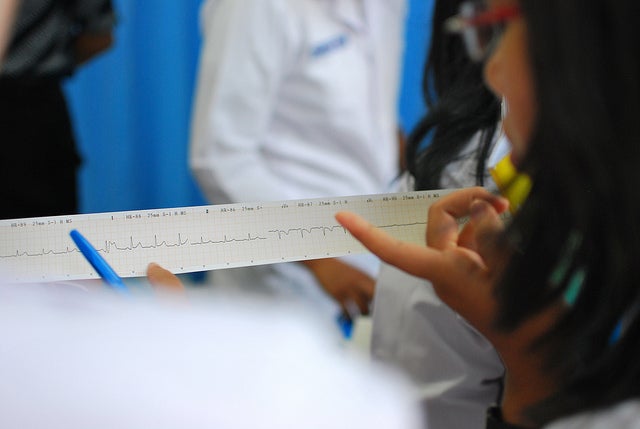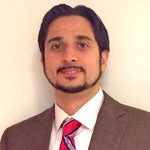
Maya is waiting for the physician to call her name. Her three children play in the waiting room, making happy noises, but she is worried about her health. The physician confirms her worst fears: it turns out that she has cervical cancer. Now what? A social worker tries to comfort her, saying that the medical staff will do their best to get her treated soon so that she can keep on working to sustain her family.
Maya is fictional, but her story reflects the many very real health challenges that confront people every day. In the real world, Maya’s story would be captured in a clinical file, labelled with her name and a number. A number: What’s behind a number in a health system? How can it become a tool to enhance results and accountability? More importantly, how can these tools provide concrete help to women like Maya? Who will ensure that Maya, along with other poor women either at risk or already diagnosed with cancer, will get timely treatment? The real-time collection and use of health care data is at the core of this challenge for each of us – residents of high-, middle- and low-income countries alike.
In the last month, we’ve seen a number of notable milestones in the pursuit of moving all countries towards universal health coverage (UHC). Primary among these was the June 9 release of the Roadmap for Health Measurement and Accountability, and 5-Point Call to Action, in which the World Bank, the U.S. Agency for International Development, and the World Health Organization outline a strategic approach to strengthen national data capacity through robust health information systems.
Decision-makers now have many tools at their disposal to analyze trends and take strategic decisions – increasingly in real-time – thanks to the rapid diffusion and adoption of information and communications technologies. New approaches to collect, manage and analyze data to improve health systems learning, such as how the poor are benefitting (or not) from health care services, are helping to ensure the right care is given to the right patient at the right time, every time – the goal of UHC.
The Roadmap and Action Plan detail the core information systems countries might consider when prioritizing investment to develop their national health information infrastructure. These systems include: civil registration and vital statistics, census and household surveys, health facility and community health information, and disease surveillance systems.
While each system plays a strategic role and strengthens national health trend data to maximize the value of these systems and the potential of “big data” insight, there are at least three critical enablers needed: 1) robust mechanisms for patient identification, 2) data infrastructure benchmarking, and 3) transparent governance of data infrastructure.
First, patient identification. A mechanism is needed to identify patient records across all levels of care, including both outpatient and inpatient. This longitudinal dimension is important for identification of trends in the target population and monitoring health outcomes. It is also critical to facilitate data linkages with budgets, services delivery and continuity of care to improve monitoring of the impact of local, regional and national decisions on cost, quality and timeliness of care.
Second, to maximize investment, countries should share best practices. A comprehensive and systematic approach, such as benchmarking, is needed to measure the development, implementation, and use of these systems especially in the context of clinical care.
Lastly, transparent and inclusive governance of information systems is also critical. Defined processes for how stakeholders (patients like Maya are key stakeholders too), will engage with and use this data infrastructure, including its maintenance and continued maturation, are needed to align the technology with shared goals. Without data stewardship and accountability for standardized system use, this infrastructure may succumb to the inherent fragmentation observed across many health systems, lessening capabilities for data linkages and the value of data captured. We must remember technology by itself cannot magically make an inefficient system suddenly more efficient.
In order to support decision-makers and health care managers in the delivery of high-quality and timely health care services – and in order to have Maya’s clinical history number be more than a statistic – meaningful analysis must be conducted by local, regional and national health care managers.
It is relatively easy to agree on public health targets, but actual progress requires a management structure supported by dashboards that can allow monitoring of intermediate outcomes in real-time.
For instance, for Maya’s case to be on the radar screen of decision-makers, data pools linked across systems must send out alerts to those decision-makers, including information on Maya’s diagnosis and the amount of time it took providers to start treatment. Such alerts are critical to call attention to case treatment delays and then to understand the reasons behind such delays (waiting lists, lack of sufficient staff, etc.). Furthermore, they could help ensure Maya’s family has the support of social safety net services at the national or local level – perhaps through providing a place for her children to be taken care of while she receives chemotherapy, or through checking if she may qualify for conditional cash transfers due to ill health and reduced income.
Data systems can facilitate this kind of learning, but their development cannot be left only to market forces or random exchanges of experiences. It requires the systematic identification of promising practices and relevant lessons learned to implement these enablers across partner countries. To achieve this, partners and key stakeholders must begin harnessing knowledge accumulated across health care systems globally. The World Bank Group and other development partners are committed to this goal. Stay tuned.
Follow the World Bank Health team on Twitter: @WBG_Health
Follow Brookings Institute on Twitter: @BrookingsInst
Related
Press Release: Partners Align on New Way Forward to Measure Impact of Country Health Programs
Roadmap for Health Measurement and Accountability
Health Measurement and Accountability Post-2015: Call to Action
Webcast: Measurement and Accountability for Results in Health Summit
Tracking Universal Health Coverage: First Global Monitoring Report



Join the Conversation